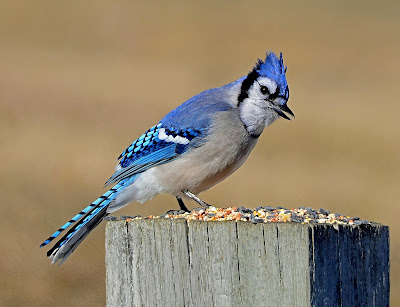The bunny is fine - just back away from the bunny
The bunny is fine - just back away from the bunny
 |
| Rescued baby snowshoe hare at the Center for Wildlife in Cape Neddick ME |
What animal first comes to mind when most of us think of spring? It is often the rabbit. Because of their rapid reproductive rates, rabbits have long been associated with spring - at least in northern seasonal climates where springtime equals lots of baby animals.
I visited the Center for Wildlife last week to take a look at some of their rabbit patients. This is the beginning of the mating season for our local rabbits; the rare New England cottontail, the Eastern cottontail and the snowshoe hare. As a result, the Center for Wildlife has been getting lots of phone calls from people who have found baby rabbits that appear to have been abandoned. The big take home message from Kristen Lamb, the executive director of the Center for Wildlife, was that usually these adorable, helpless little bunnies are not actually abandoned and that if you find a solitary baby rabbit or a rabbit nest leave it alone - or as Kristen likes to say “back away from the bunny.”
If you find a nest of baby bunnies it is most likely a cottontail nest, not a snowshoe hare nest. Snowshoe hares give birth to precocial young. This means they are born with hair, eyes wide open and are ready to run, they don’t need to linger at their birth site. Cottontail rabbits do things differently, they give birth to altricial young. This means the young are born naked, with closed eyes and are definitely not ready to leave the nest. And yes, the proper term is nest. Unlike European rabbits which dig extensive burrows, North American rabbits and hares do not burrow, instead they scrape out shallow nests on the surface of the ground.
People often find these nests while mowing the lawn for the first time in spring. The babies are there, motionless and defenseless, there is usually no adult in sight. Lack of an obvious adult does not, however, mean the nest has been abandoned. Rather, this is a strategy rabbits use to keep from drawing attention to the nest — they stay away from it as much as possible. Kristen explained that the mother rabbit might return to the nest to nurse just two times a day, often at dawn and dusk, and is there just briefly - she can usually nurse all of her young (anywhere from 1-12 babies) in less than 10 minutes.
If you do find a nest, unless the babies look unhealthy (a healthy baby bunny will have pink skin, nice looking fur and a little milk belly), try to return the area around the nest back to the way it looked before. You can watch for the mom, but unless you are watching 24 hours a day you could easily miss her. Assume she is nearby. You are more likely to hurt than help if you remove a baby rabbit from its nest - their chance of survival being raised in captivity is very low.
Rabbits are prey species and as such are extremely high strung. They don’t do well in captivity because they are so terribly anxious. Overhandling is an enormous stressor. One of the rabbit patients at the Center for Wildlife spent a lot of time outside of its box instead of hiding inside like the other rabbits — this was evidence of a neurological problem because lack of fear is abnormal in rabbits.
Baby rabbits are also difficult to feed. Rabbits produce two types of droppings - fecal pellets and something called a cecotrope. Cecotropes are produced in a region of the digestive tract that contains a natural community of bacteria and fungi that help the rabbit digest food and provides essential nutrients. If you try to raise a baby bunny and don’t provide cecotropes, the bunny will eventually succumb to malnutrition. Places like the Center for Wildlife have to feed bunnies cecotropes from other rabbits and give them special milk (rabbit milk is much higher in fat than other types of milk because the babies nurse so infrequently).
So, if you find a nest of adorable baby cottontails, or a defenseless-looking little snowshoe hare crouched under a bush, the best thing you can do is assume nature knows what it is doing and follow Kristen’s advice - back away from the bunny.



Comments
Post a Comment